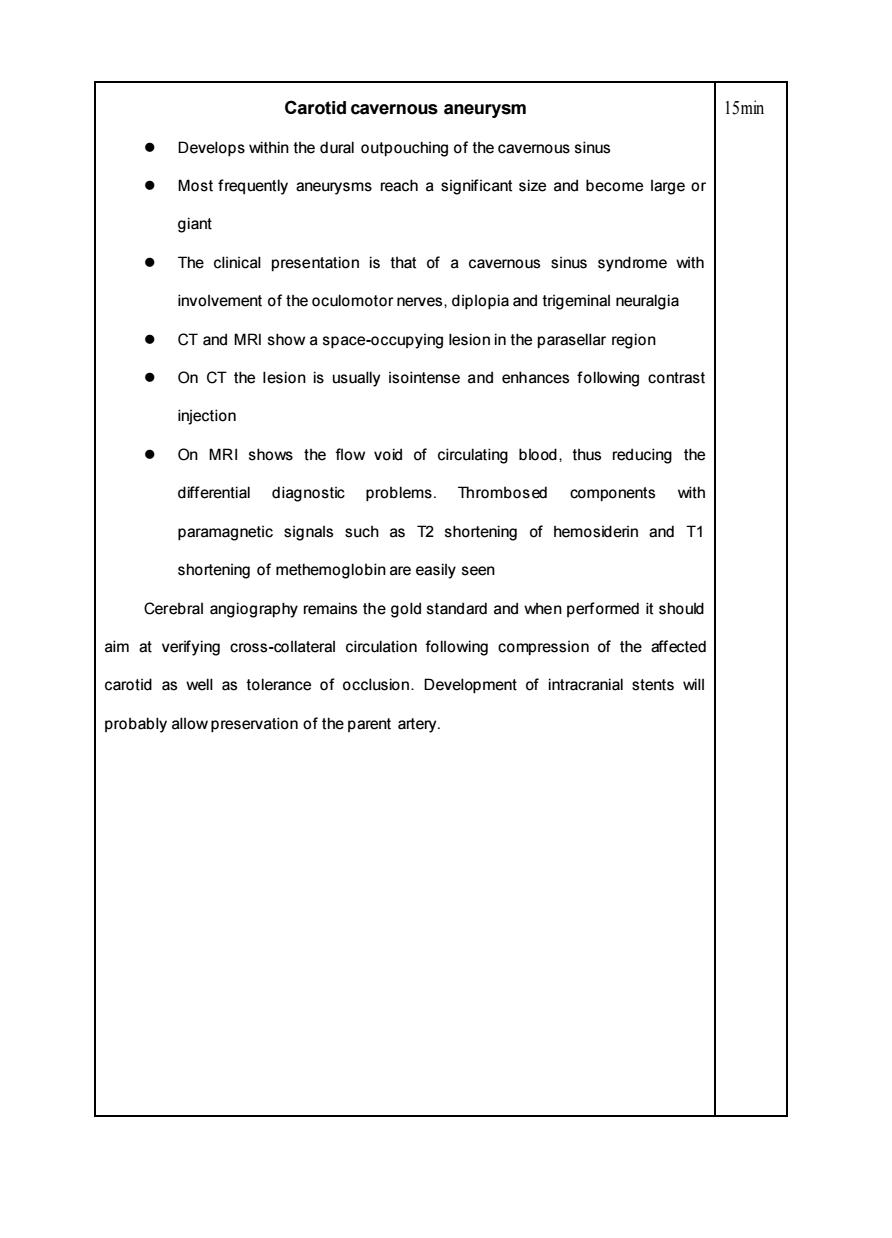正在加载图片...

Carotid cavernous aneurysm 15min Develops within the dural outpouching of the cavemous sinus Most frequently aneurysms reach a significant size and become large or giant The clinical presentation is that of a cavemous sinus syndrome with involvement of the oculomotor nerves,diplopia and trigeminal neuralgia CT and MRI show a space-occupying lesion in the parasellar region .On CT the lesion is usually isointense and enhances following contrast injection .On MRI shows the flow void of circulating blood,thus reducing the differential diagnostic problems.Thrombosed components with paramagnetic signals such as T2 shortening of hemosiderin and T1 shortening of methemoglobin are easily seen Cerebral angiography remains the gold standard and when performed it should aim at verifying cross-collateral circulation following compression of the affected carotid as well as tolerance of occlusion.Development of intracranial stents will probably allow preservation of the parent artery.Carotid cavernous aneurysm ⚫ Develops within the dural outpouching of the cavernous sinus ⚫ Most frequently aneurysms reach a significant size and become large or giant ⚫ The clinical presentation is that of a cavernous sinus syndrome with involvement of the oculomotor nerves, diplopia and trigeminal neuralgia ⚫ CT and MRI show a space-occupying lesion in the parasellar region ⚫ On CT the lesion is usually isointense and enhances following contrast injection ⚫ On MRI shows the flow void of circulating blood, thus reducing the differential diagnostic problems. Thrombosed components with paramagnetic signals such as T2 shortening of hemosiderin and T1 shortening of methemoglobin are easily seen Cerebral angiography remains the gold standard and when performed it should aim at verifying cross-collateral circulation following compression of the affected carotid as well as tolerance of occlusion. Development of intracranial stents will probably allow preservation of the parent artery. 15min